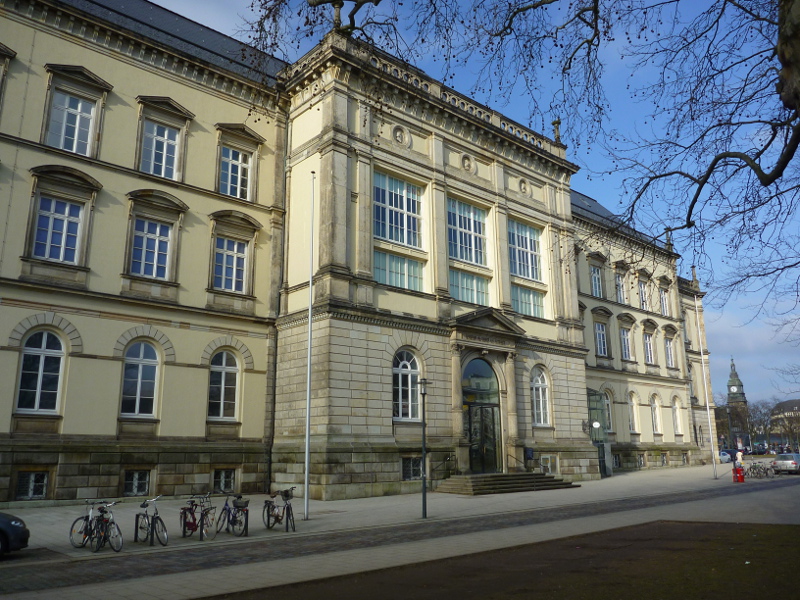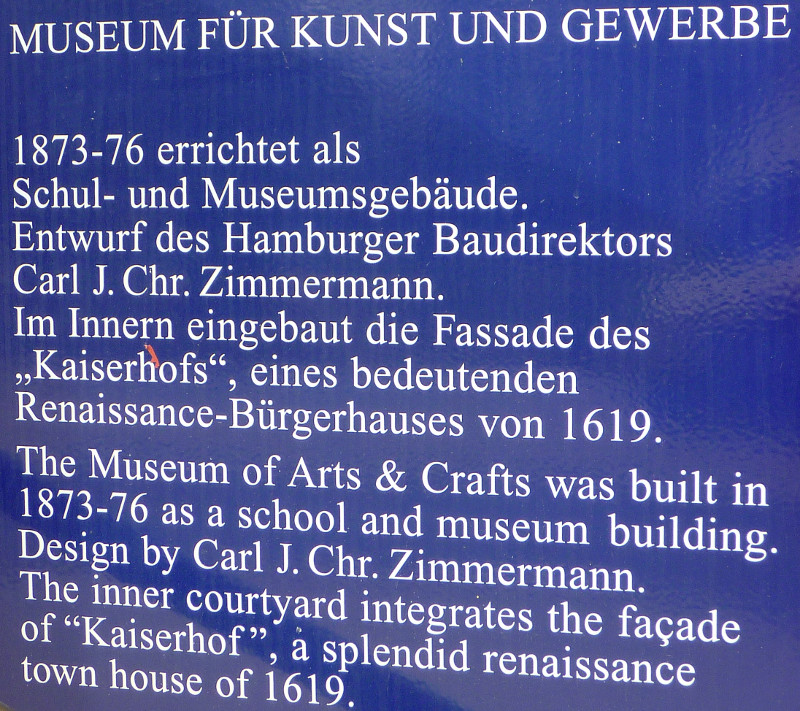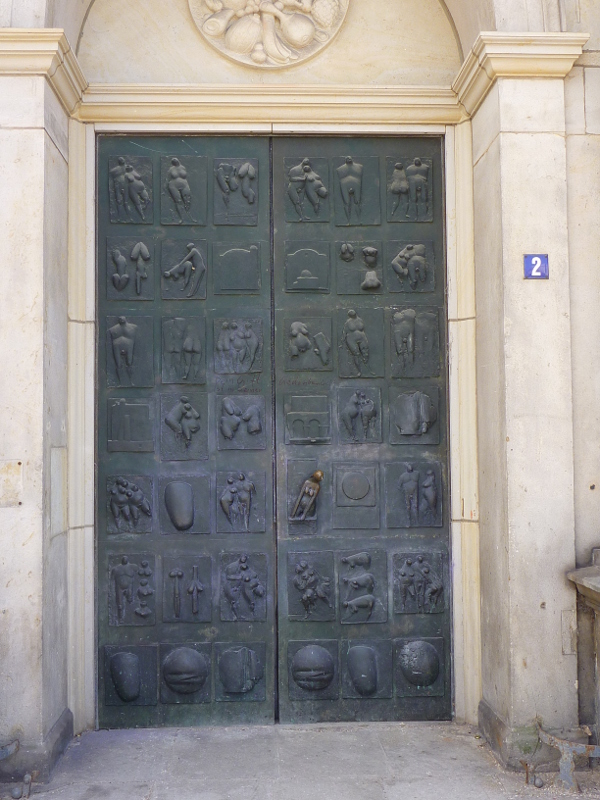
Hamburg's Museum of Arts &
Crafts, seen by looking across
Brockesstraße from the plaza greens of
Carl-Legien-Platz
Hamburg's Museum of Arts and Crafts
(Museum für Kunst und Gewerbe),
in English-language texts also referred to as
Museum of Decorative and Industrial Arts,
was designed between 1873 and 1875 by
Carl Johann Christian Zimmermann.
It opened in 1877 under the official name
Staatliches Technikum und Museum für
Kunst und Gewerbe (State Center for
Technology and Museum of Fine and Useful Arts).
It's first director was the scientist, jurist and art champion
Justus Brinckmann (1843-1915) [1-3].
The museum is particularly notable for its collection of
historic keyboard instruments, the
Hanneforth collection of experimental
violins (donated in 2011),
17th- and 18th-century porcelain,
carpets, furniture and other fine art works from the
Islamic and
Baroque epoch as well as the
Art Nouveau and
Expressionist movement.

Bilingual plaque at the museum's
facade
The keyboard collection includes harpsichords (for example, the
Taskin harpsichord), spinets, virginals,
clavichords and pianos. Of special interest are the miniaturized
versions of harpsichords with such curiosities as an ottavina, a small cembalo manufactured by Leopoldo Franciolini, and a spinettino, a down-sized spinet. Also exciting is the surprising collection of ingenious instruments by the biologist Prof. Dr. Wolfgang Hanneforth, who has collected over 150 string and wind instruments [4,5]. My favorite instrument is the Stroh violin, developed by the engineer Johann Matthias Augustus Stroh (1828-1914). This is a violin with trumpet-shaped metal attachments for sound amplification, useful during the early days of recording. Visitors can listen to samples of recorded Stroh violins, replayed on animated audio tracks: who, before, has seen Tango dancers performing to the sound of Stroh violins?
The museum also features special exhibits, in which companies
present their arts and crafts; for example the American company
Pixar
(“25 Years of Pixar”), which pioneered the
making of computer animation films such as
Finding Nemo and Monsters, Inc.:
Pixars Trickfilmkunst in Hamburg.
|

Door of Hamburg's Museum of Arts
& Crafts at
Brockesstraße 2
(this is not a museum entrance)
Getting there
The museum is only a short walk away from Hamburg's Central
Station (Hauptbahnhof).
Leave the station through the upper-floor southeast gate or the
Hauptbahnhof Süd subway station
exit. Cross the traffic lanes of
Adenauerallee/Steintorplatz to get
onto Brockesstraße. This road
is located between Carl-Legien-Platz
and the east-facing exterior side of the museum.
At the northeast corner of the museum complex you will
pass the bronze door (Brockesstraße 2) with its relief tesselation of erotic art scenes.
You will find the main entrance at the center of the facade
across the green park plaza. Relax in the park or scan the
interesting accessoires and information plaques along the facade
before entering the museum.
Address:
Steintorplatz, 20099 Hamburg, Germany
Phone: +49 40 428134880
Hours:
11:00 am - 6:00 pm (Tuesday to Sunday)
Closed on Monday
|

